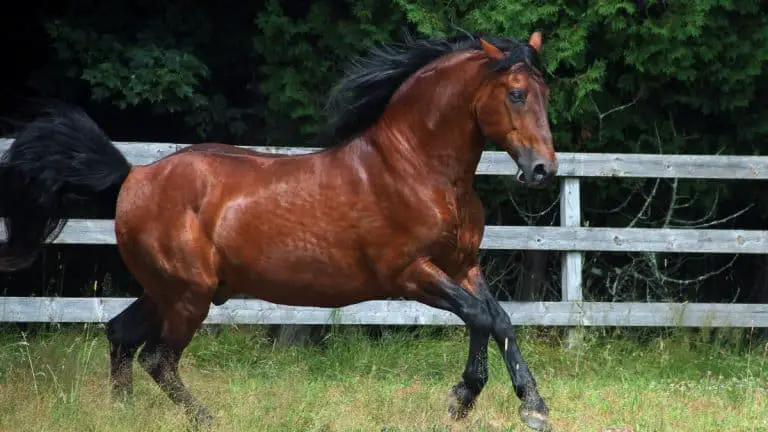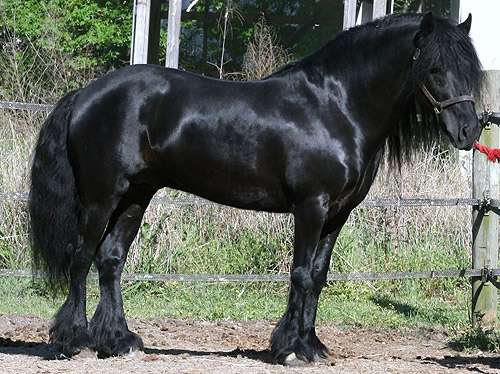
Size
Morgans weigh between 900 and 1,100 pounds (400 to 500 kg) and stand between 57 and 61 inches (145 to 155 cm) tall on average.
Physical Attributes
The Morgan is a compact and elegant breed with powerful legs, an expressive head with a straight or slightly convex profile and a broad forehead, big, prominent eyes, well-defined withers, laid-back shoulders, and an upright, well-arched neck.
Colors
Although registered Morgans can be any color black, bay, and chestnut are the most prevalent. Grey, dun, roan, silver dapple, and cream dilutions such palomino, cremello, buckskin, and perlino are less prevalent hues.

History and Origin
One of the first horse breeds to be established in the US was the Morgan. Figure, a horse owned by Vermont teacher Justin Morgan in the late 1700s, was the first stallion of the breed. Although the exact lineage of Figure is unknown, it is generally believed that it was a horse with Arabian, thoroughbred, and possibly Welsh cob or Friesian ancestry. To act as a breed registry, the American Morgan Horse Association was founded in 1909.
Temperament
Inquisitive about their surroundings and brave, intelligent horses, Morgans are also exceedingly vigilant. It is ideal for children, as well as seasoned or new riders, despite its power because of its peaceful and friendly nature.
Grooming
For a Morgan horse, typical equine grooming methods should work just well. At least once or twice a week, brush and comb your horse’s coat to get rid of knots, debris, and grime. To avoid matting, pay extra attention to the mane and tail, which are noticeably thick. Keep an eye out for dirt, debris, infections, and injuries in your horse’s hooves every day.
Diet and Nutrition
In general, Morgans require less food than many other full-size horse breeds since they are simple to keep. They need a typical diet consisting of good grass, hay, and grains. Owners should take care not to overfeed their horses, especially with sweets. Morgans are prone to obesity since they are simple to overfeed. As a result, it’s crucial to only give your horse what it actually needs to stay in good physical shape.
Table





